


Remove some stock so the router doesn't have to work so hard.
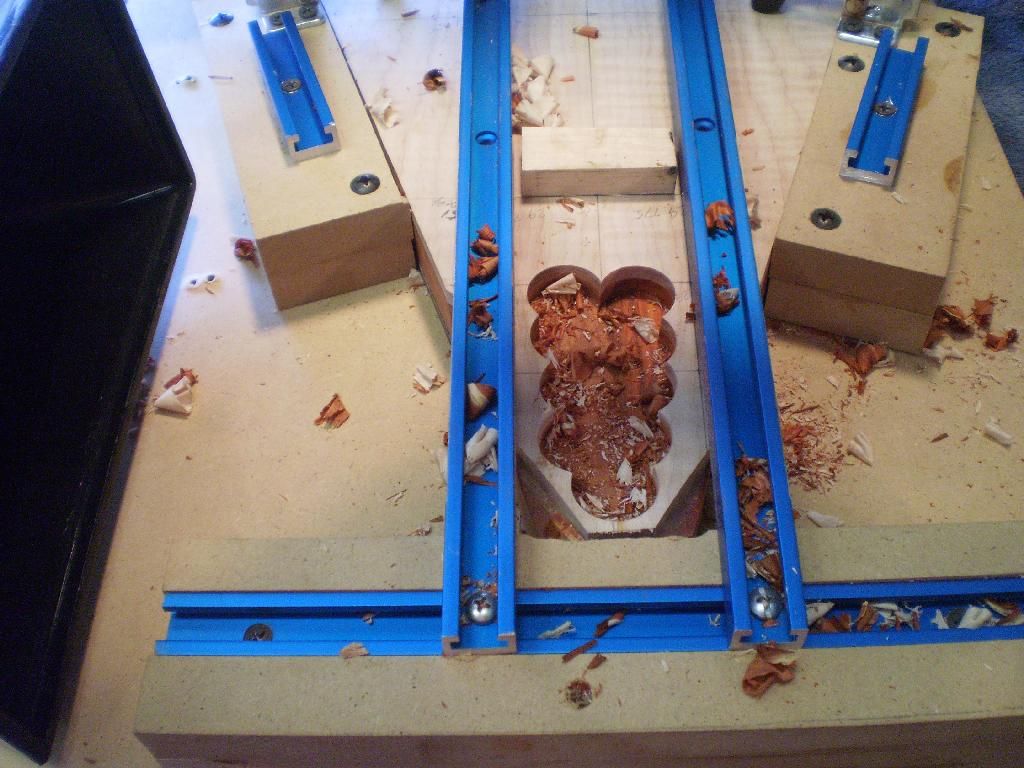

I have started squaring up the corners of the neck pockets rather than round the corners of the neck. It is hard to sand a 3/8" rounded corner on a neck blank. It is easy to make a 90 degree corner in the neck pocket with a sharp chisel.
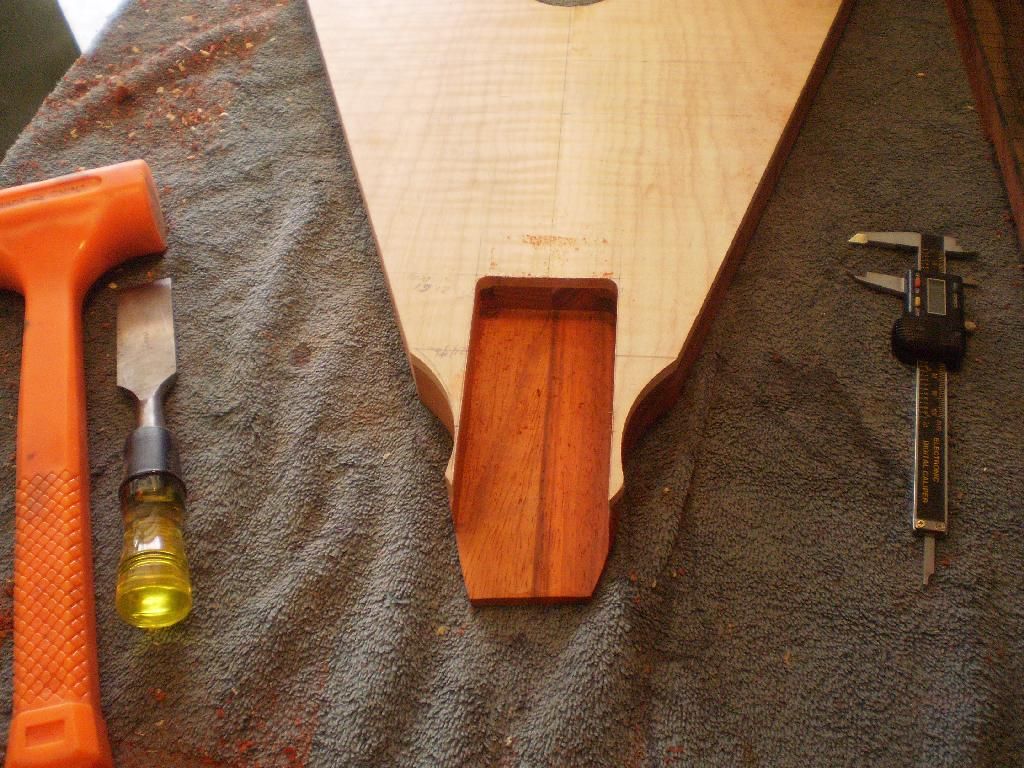
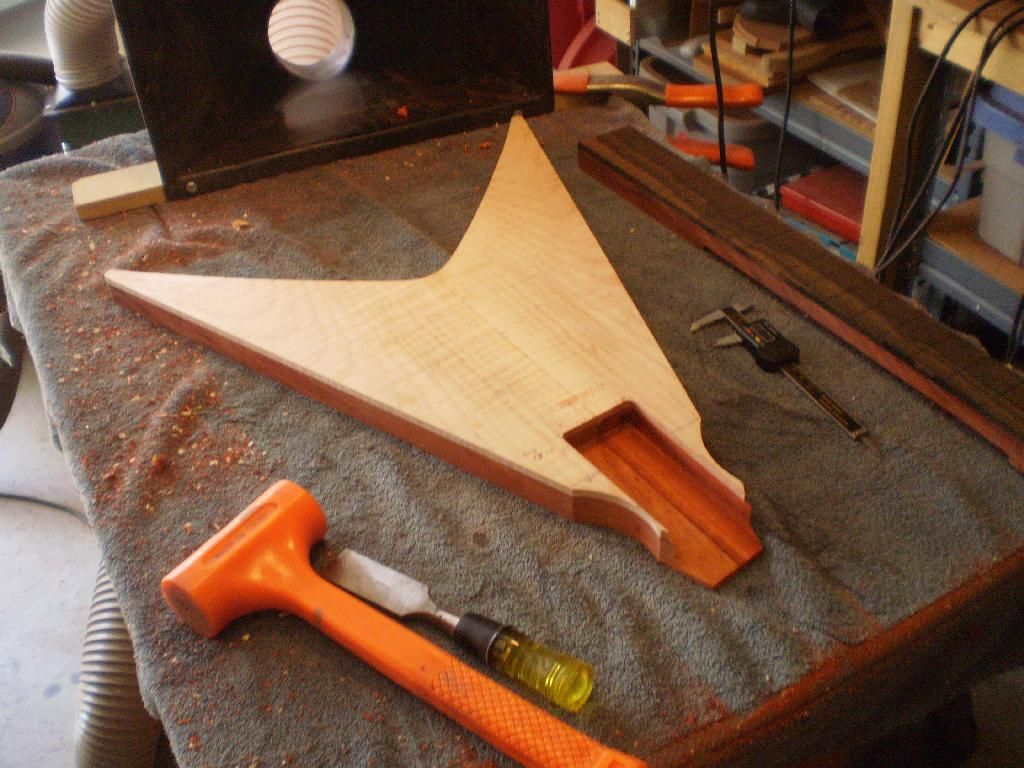
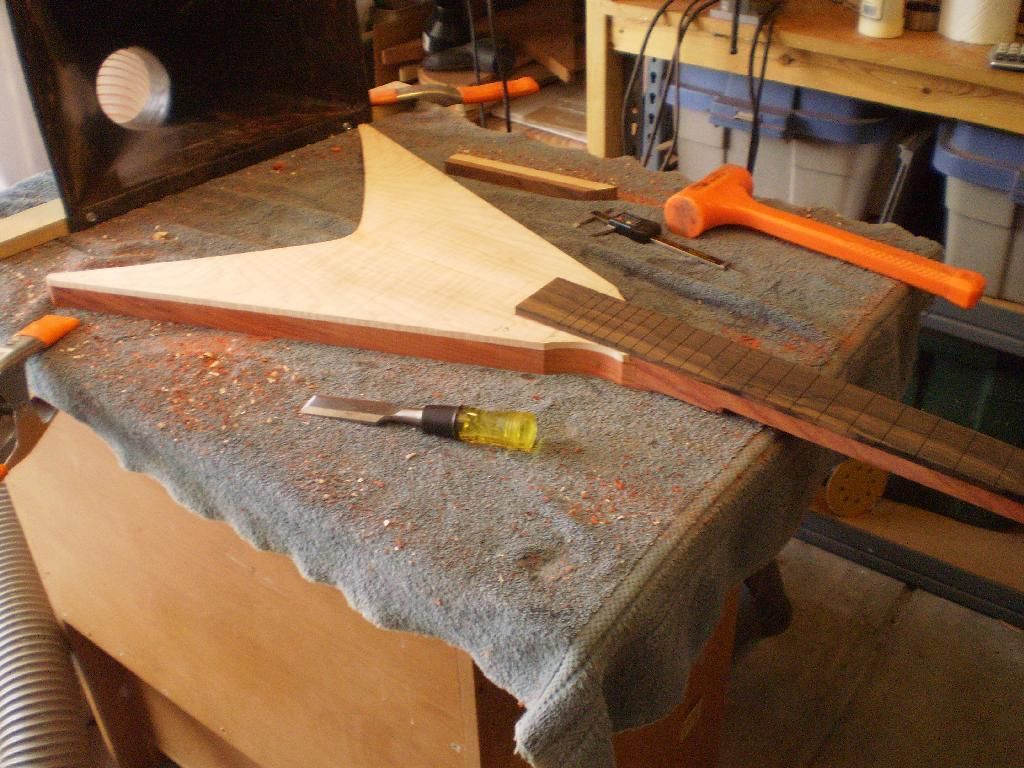

I am ok with tight enough to lift the body.
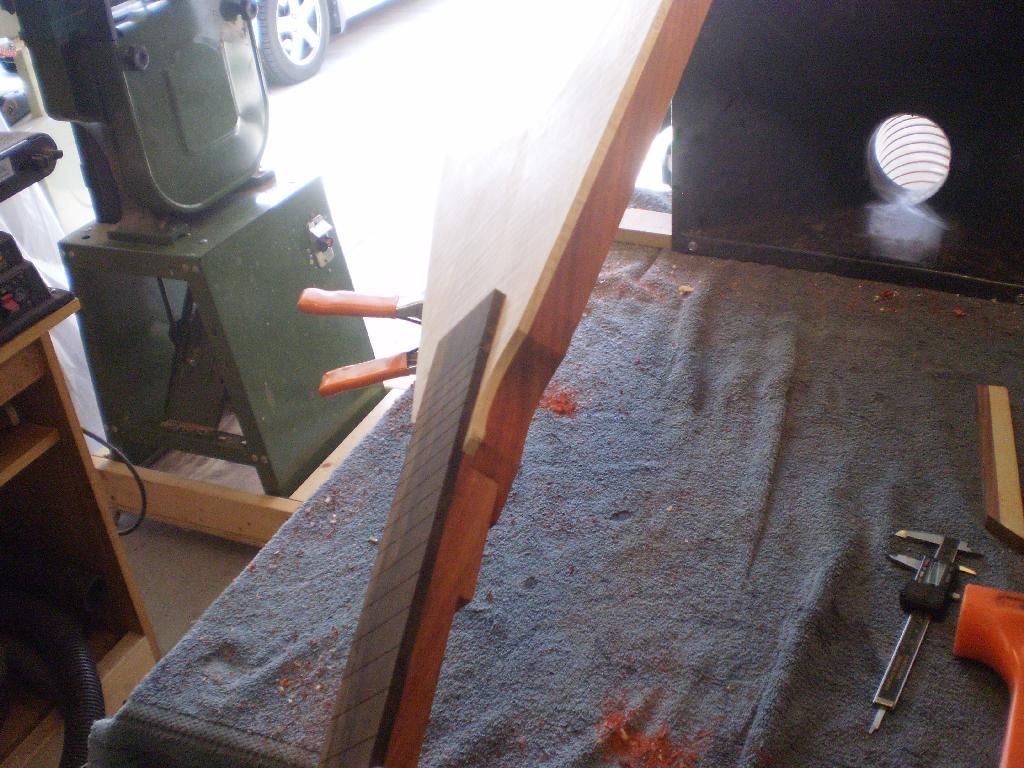
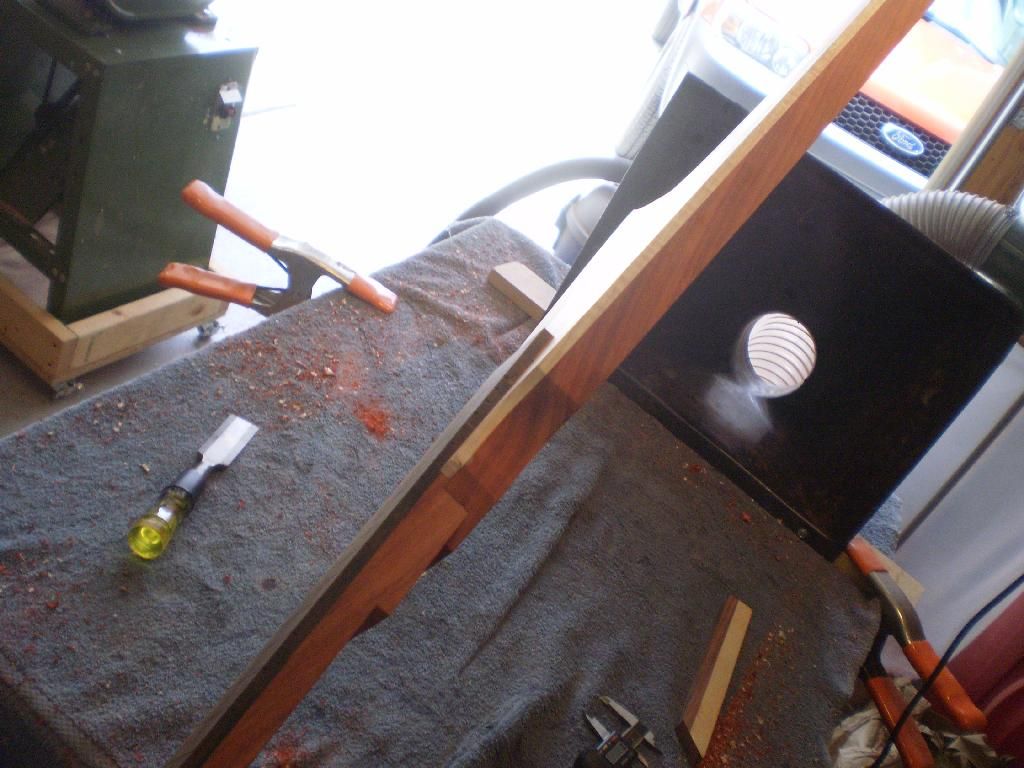
From behind and a look at the front.
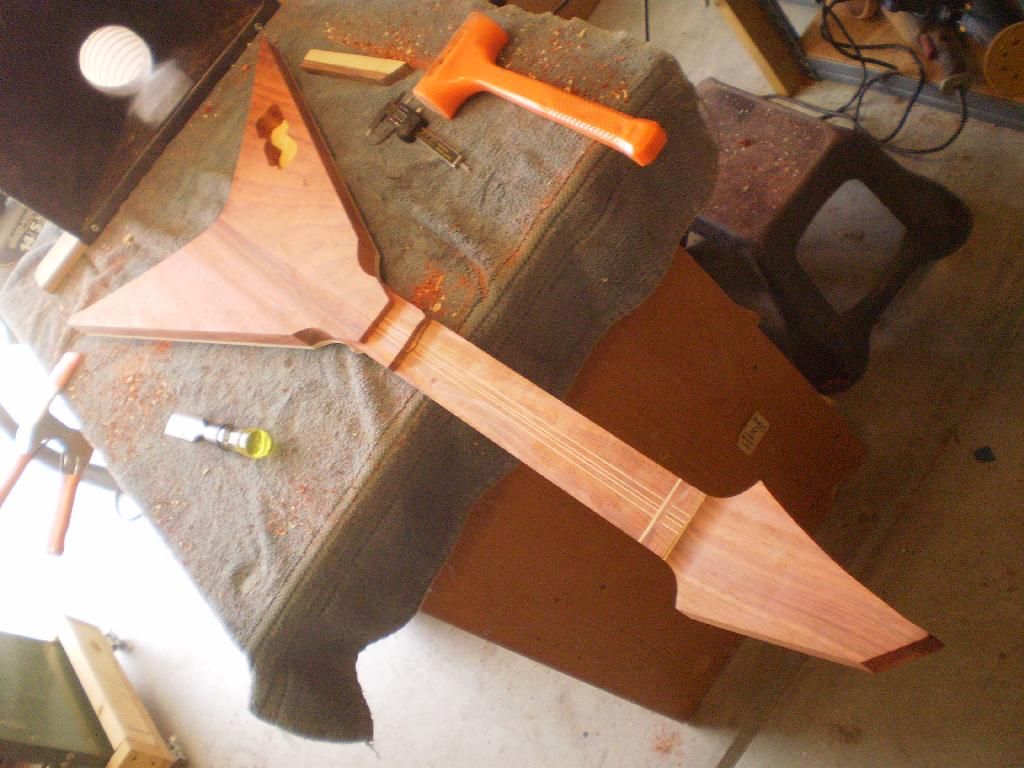
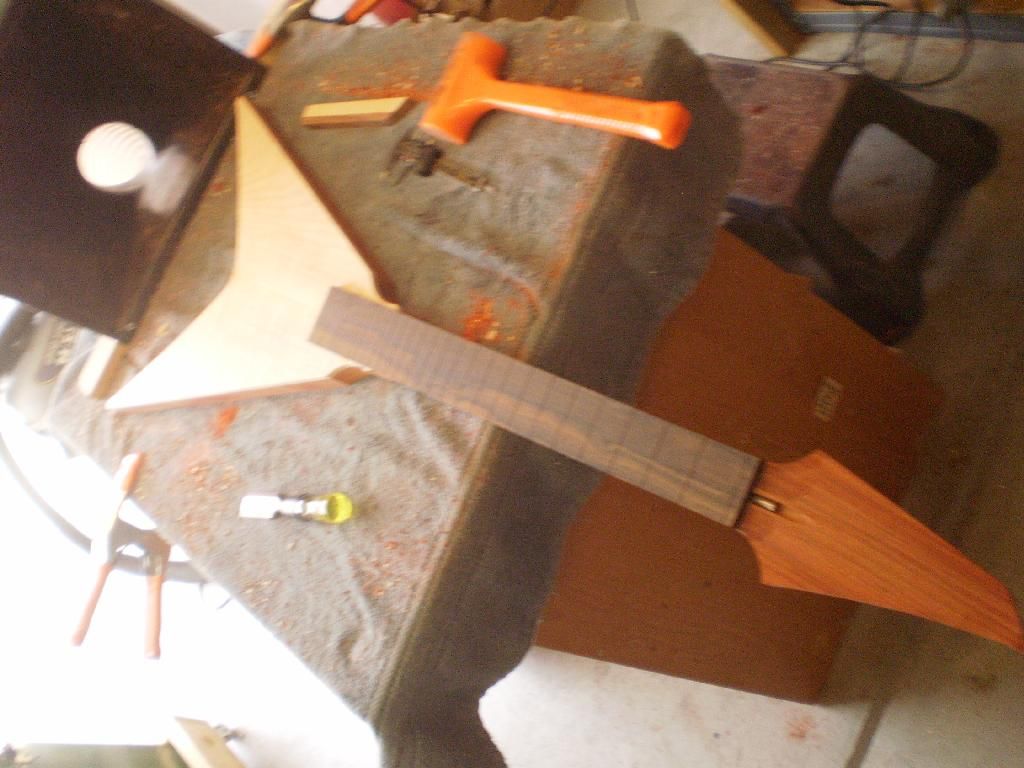
This guitar gets the new blade humbuckers I designed. Basically they are blade style Diablos in an EMG cover. Add to the mix a tone pros bridge and stop tailpiece and we have a pretty straight forward rock machine.

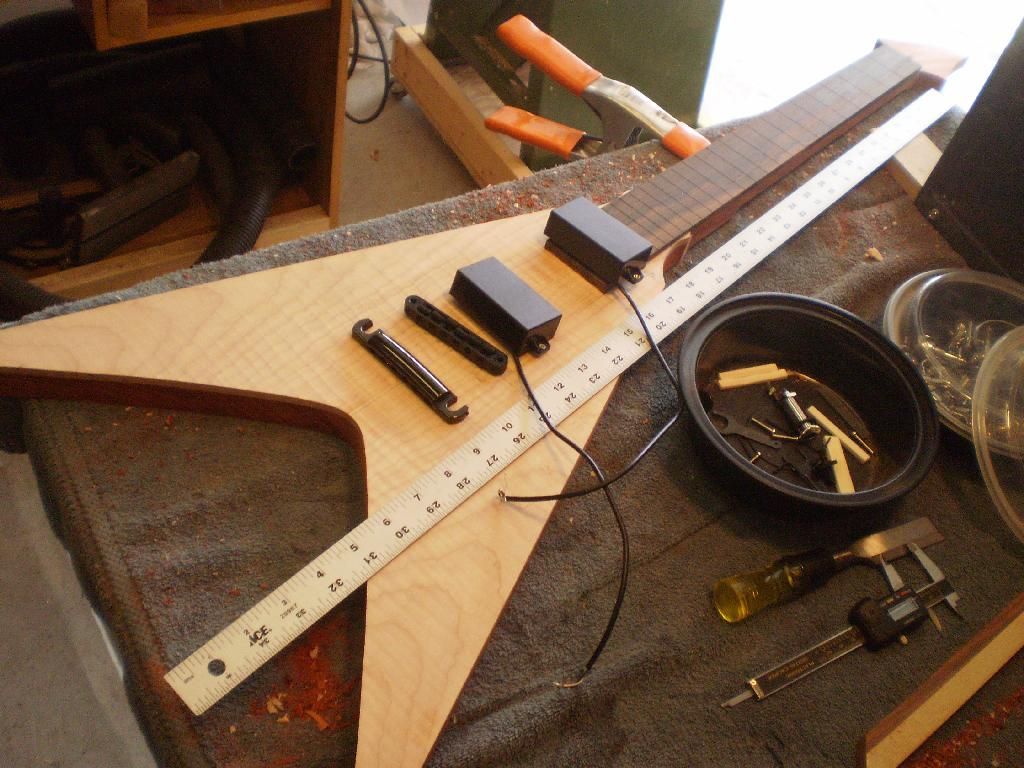
Bridge set. I can't drive the bushings in until later as they will be hard to get out.
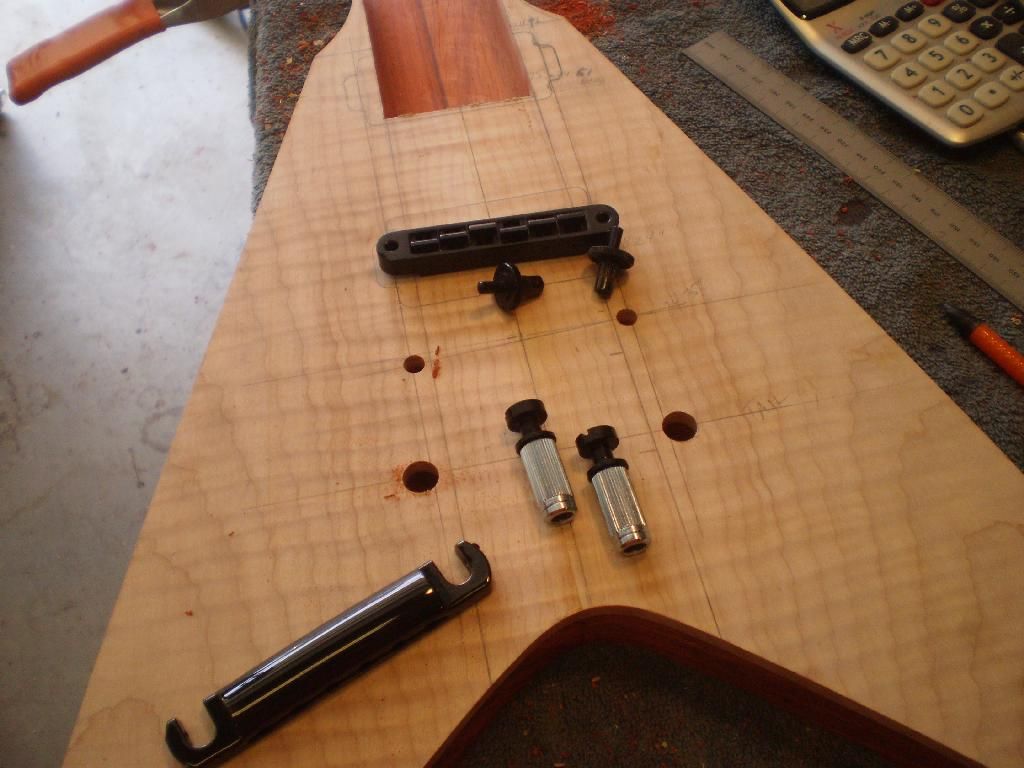
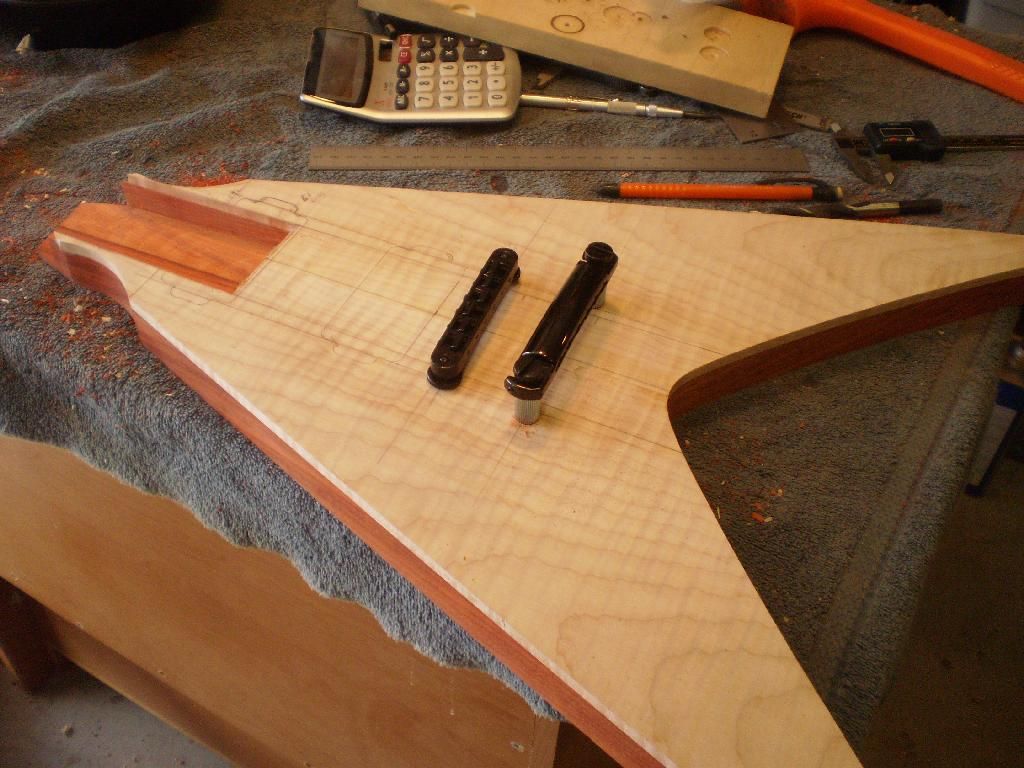
Time to start on the pickups. Again remove stock so the router doesn't work to hard. I plan the depth by using a long straight edge run the length of the fretboard to the bridge. Then measure down to the top... subtract that from the height of the pickup and you get the depth of the route. No that is not complicated at all...
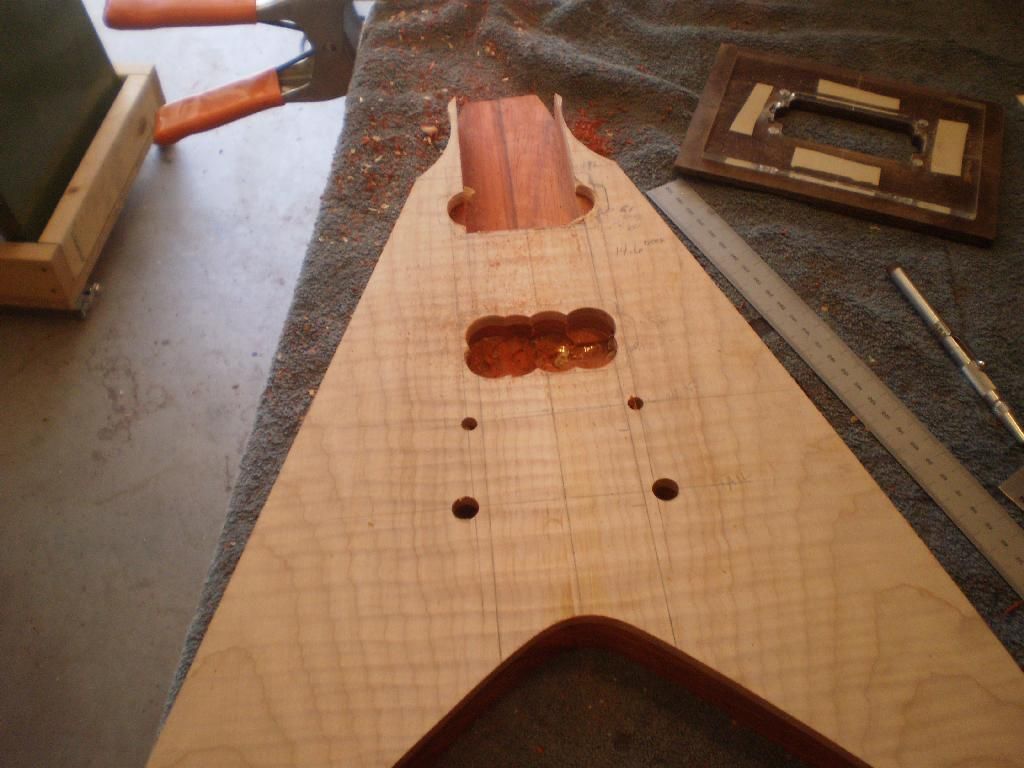

Electronics cavity cleaned up and plate added.
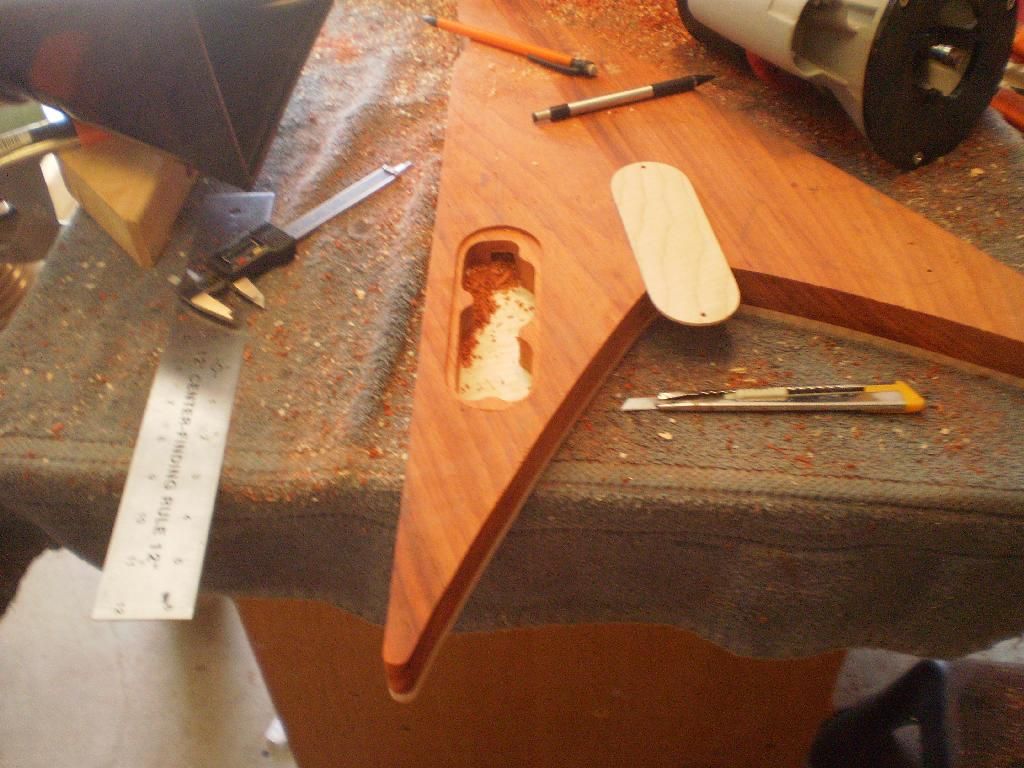

A look at the wire channels. These things are huge... have to remember to be careful while routing. Tear out can be an issue. Another thing to watch out for is if the router bearing hits the opening there is a chance for bad things to happen.

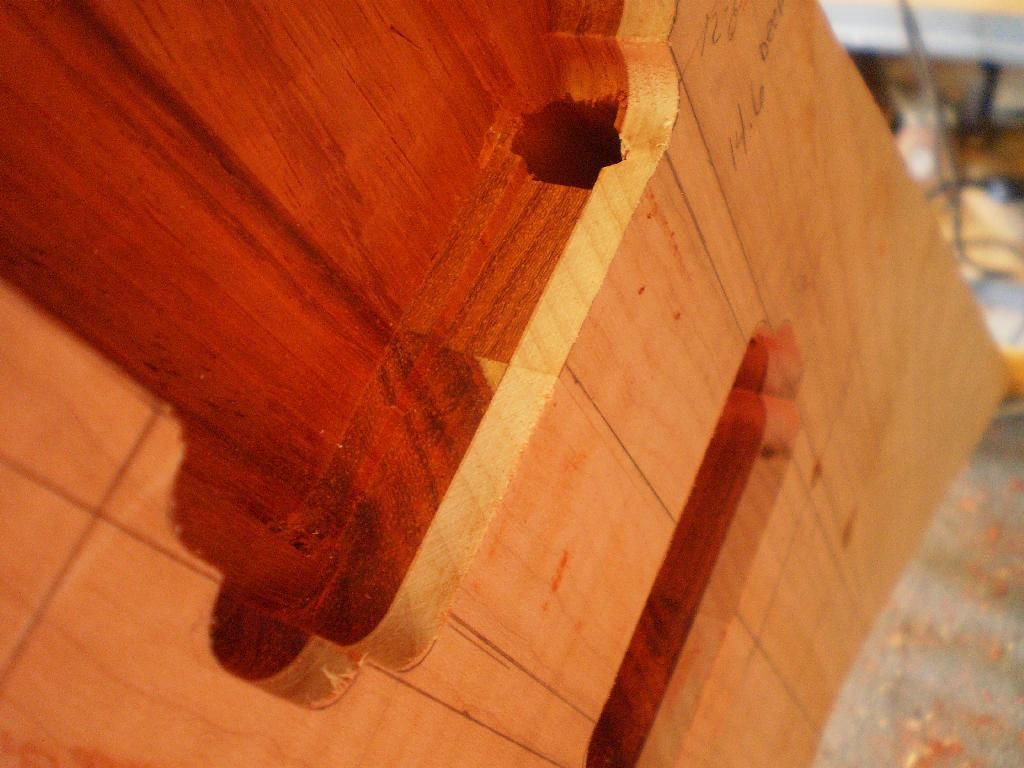
Remember the cavity on the top horn. It is for the input jack. I made it large enough to house a battery if I want later (not that I will).
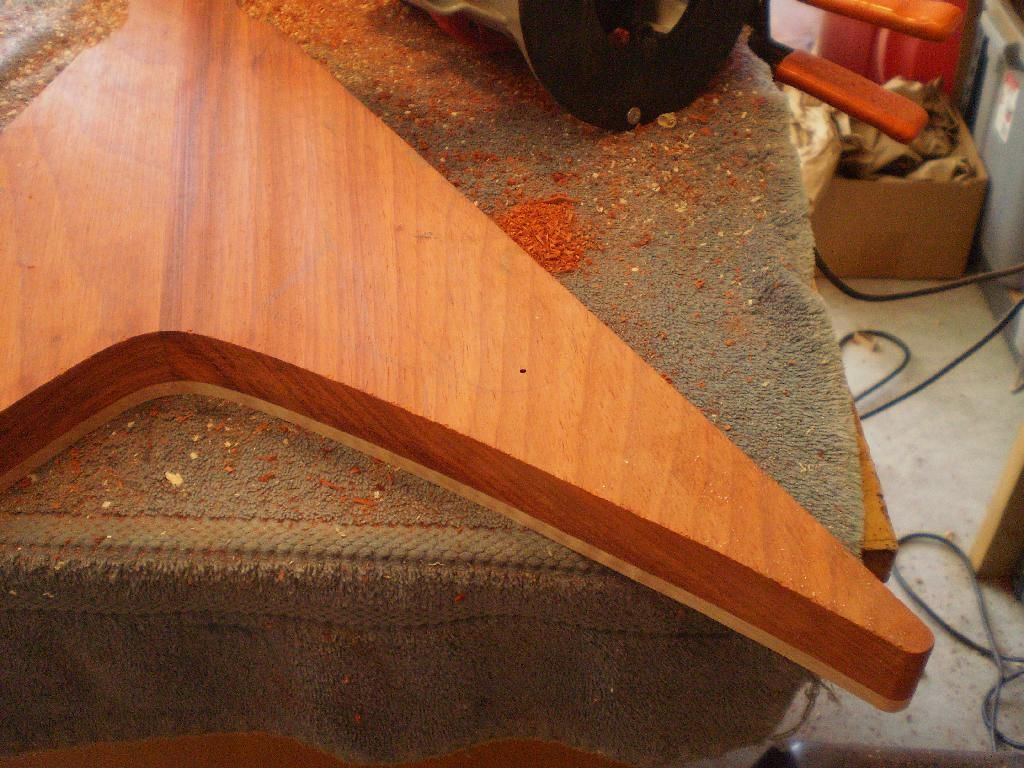
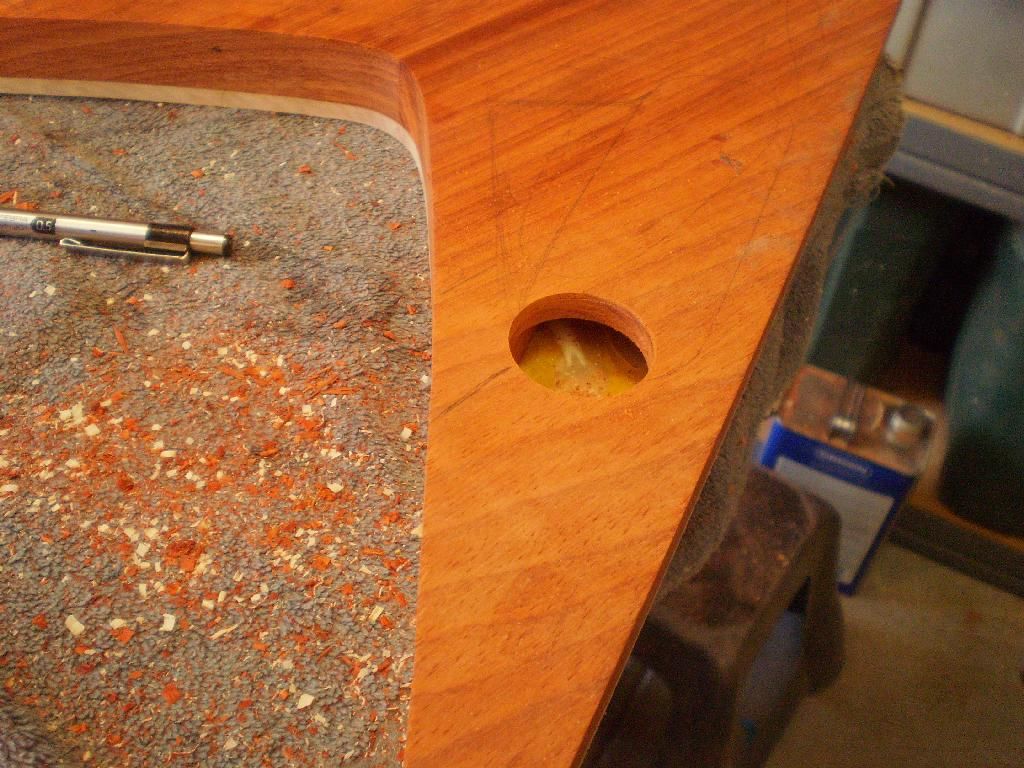
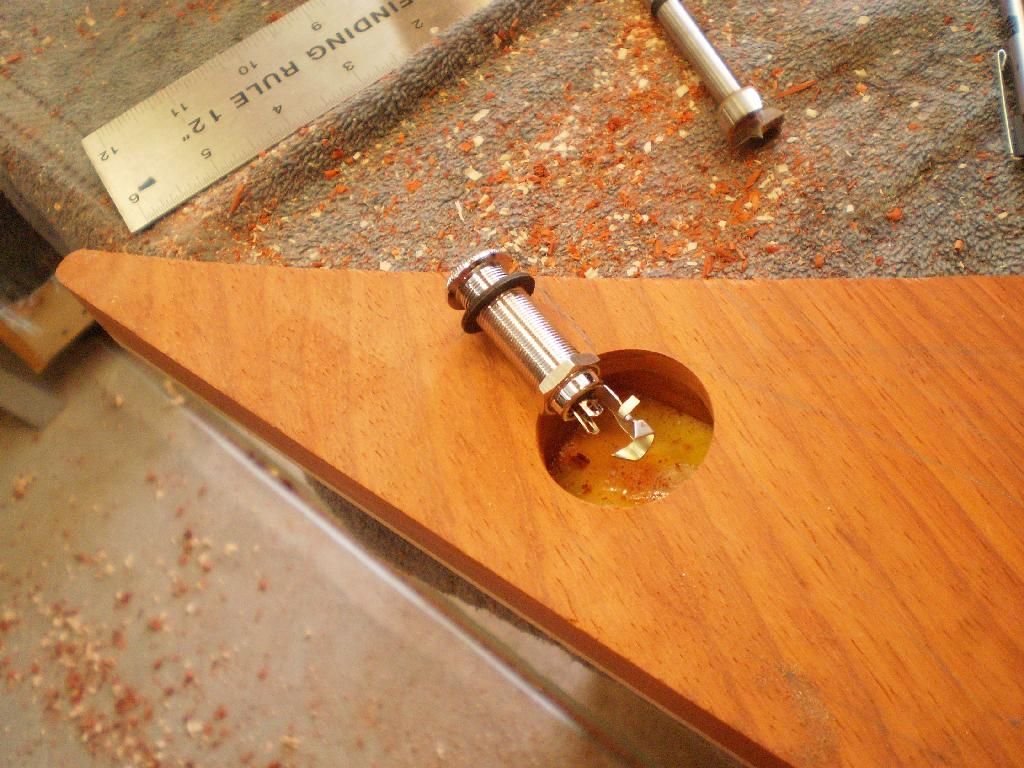
I need a jig for drilling the recess jack in the top horn.
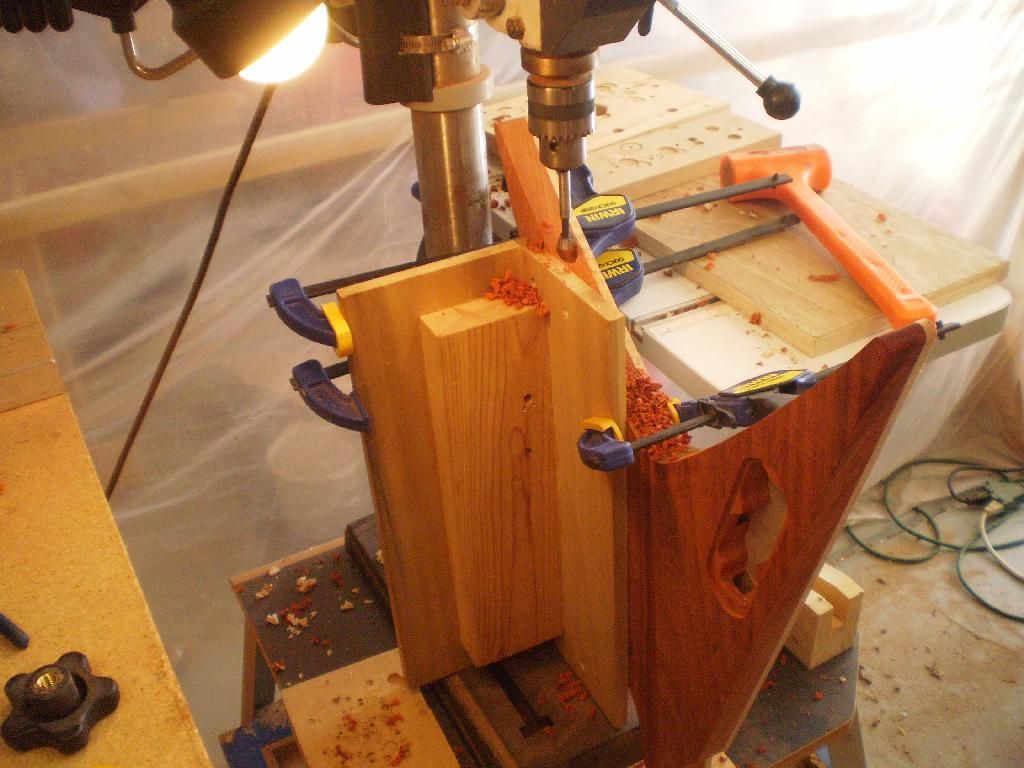
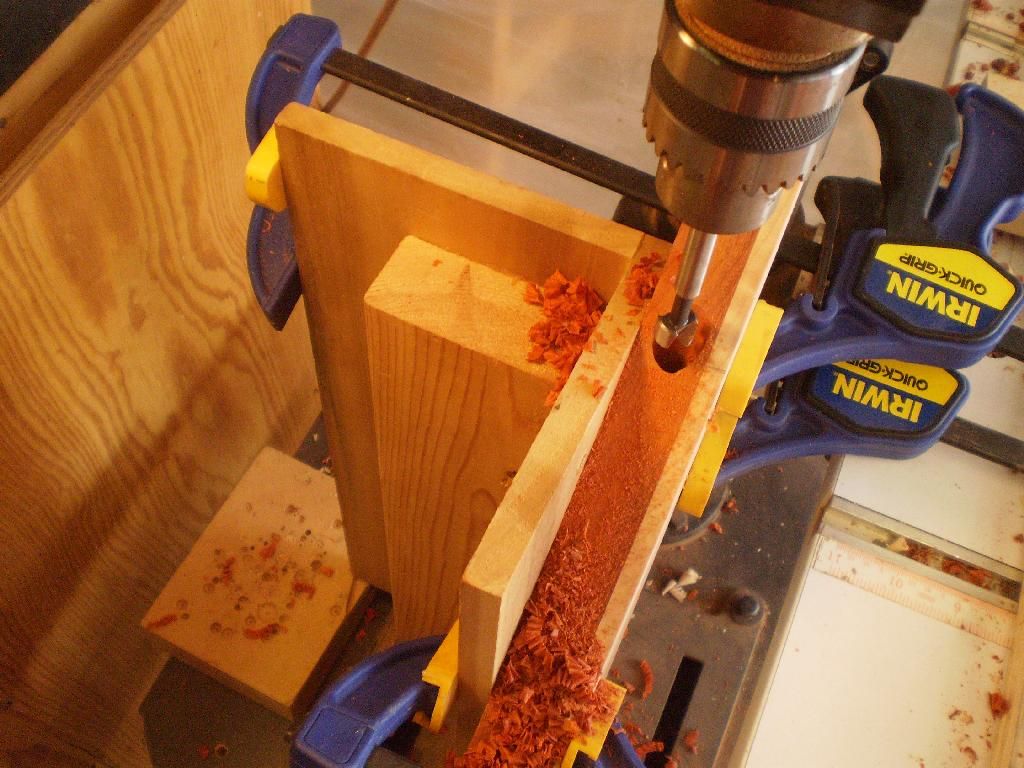
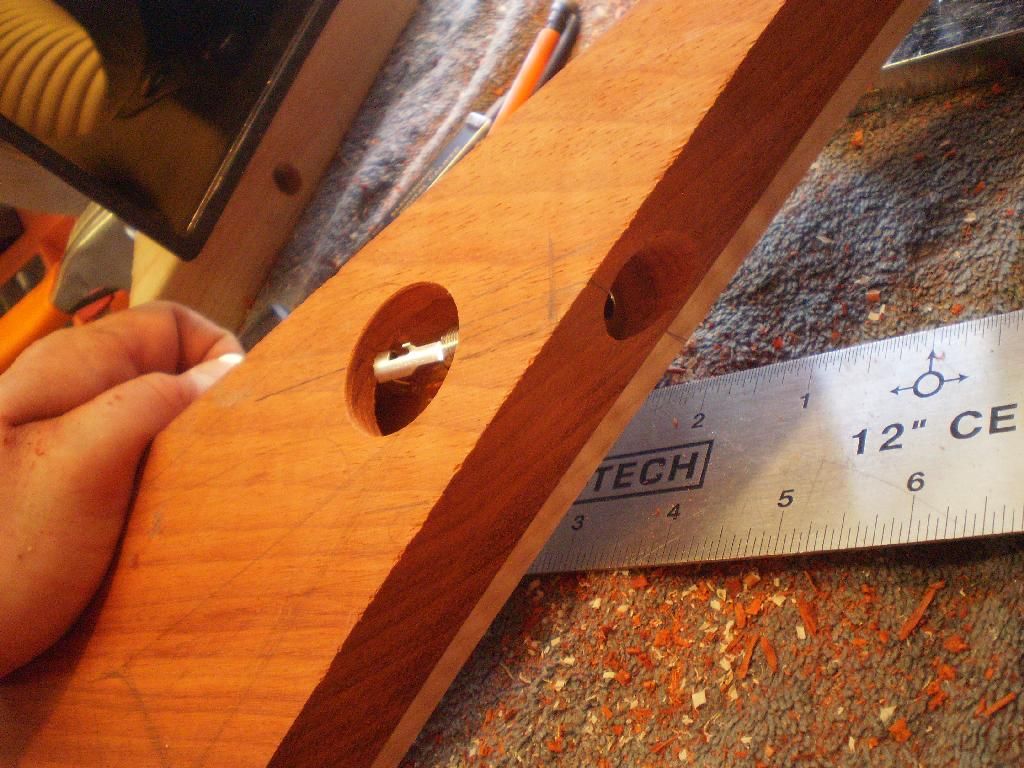
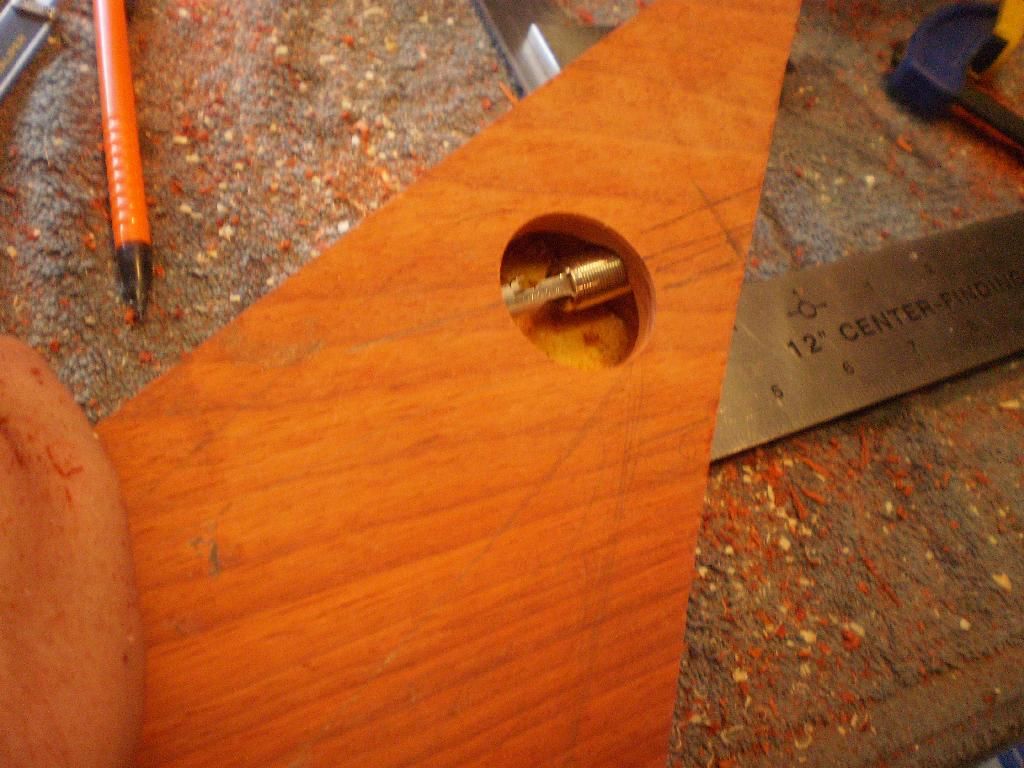
The block is your friend. When doing 3/16" roundovers without a router table you should not try to route out on the edges. The router will always bite and destroy your edge. I try to stop a few inches short and follow up with a sanding block. The other advantage of the sanding block is that I can true up the edges at the same time I am finishing up the roundovers.
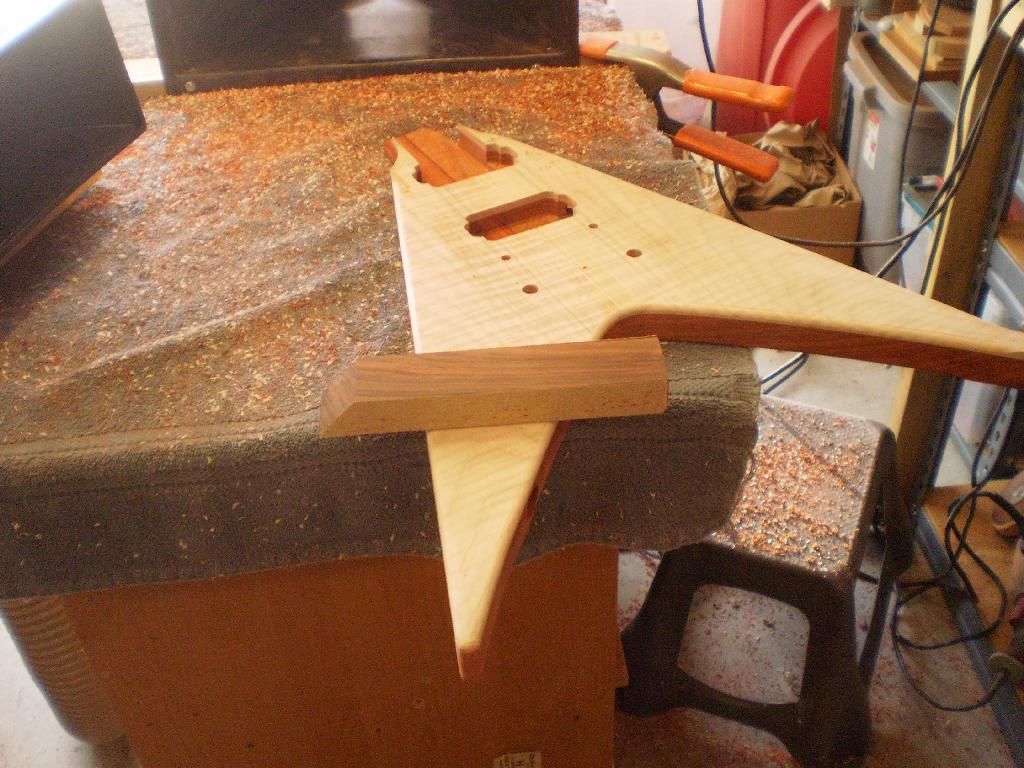
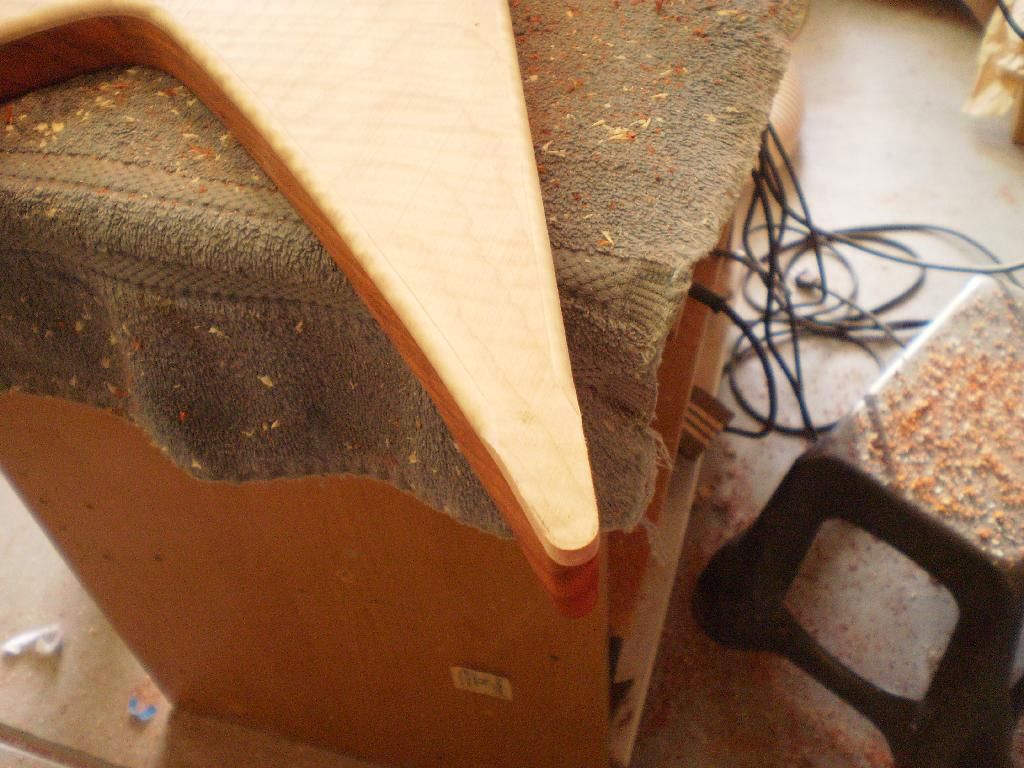
Always sand the body to at least 120 grit before attaching the neck. It is a lot easier to sand without the neck getting in the way. Be careful on the edges as the orbital will ruin a straight edge fairly quick.
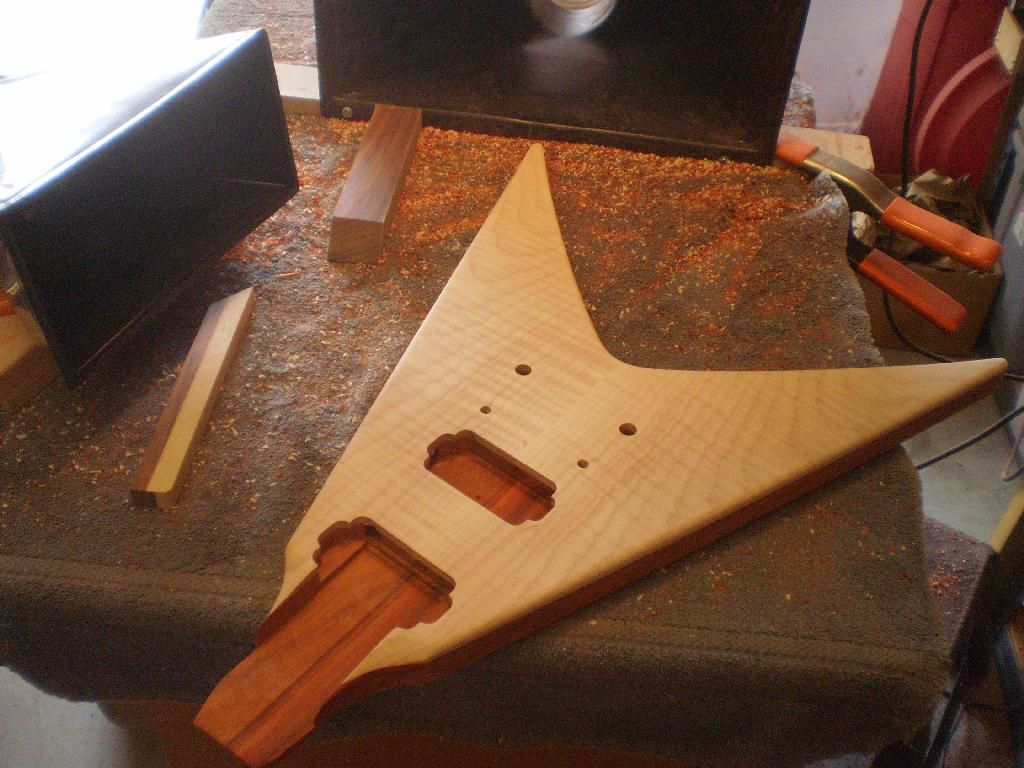
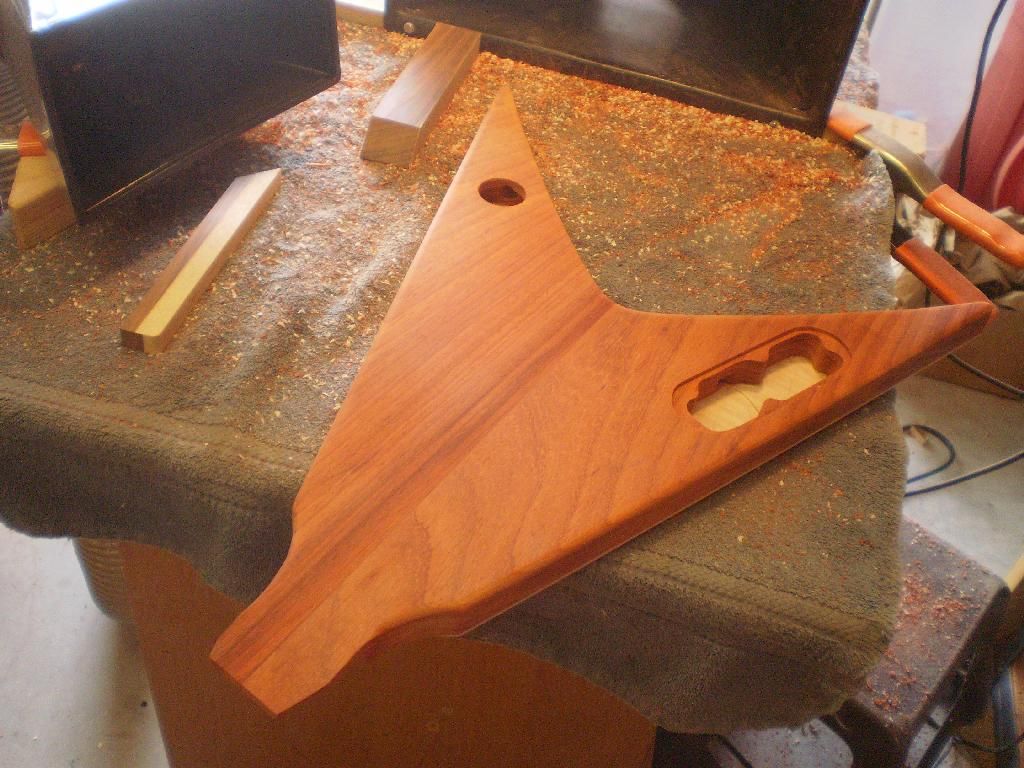

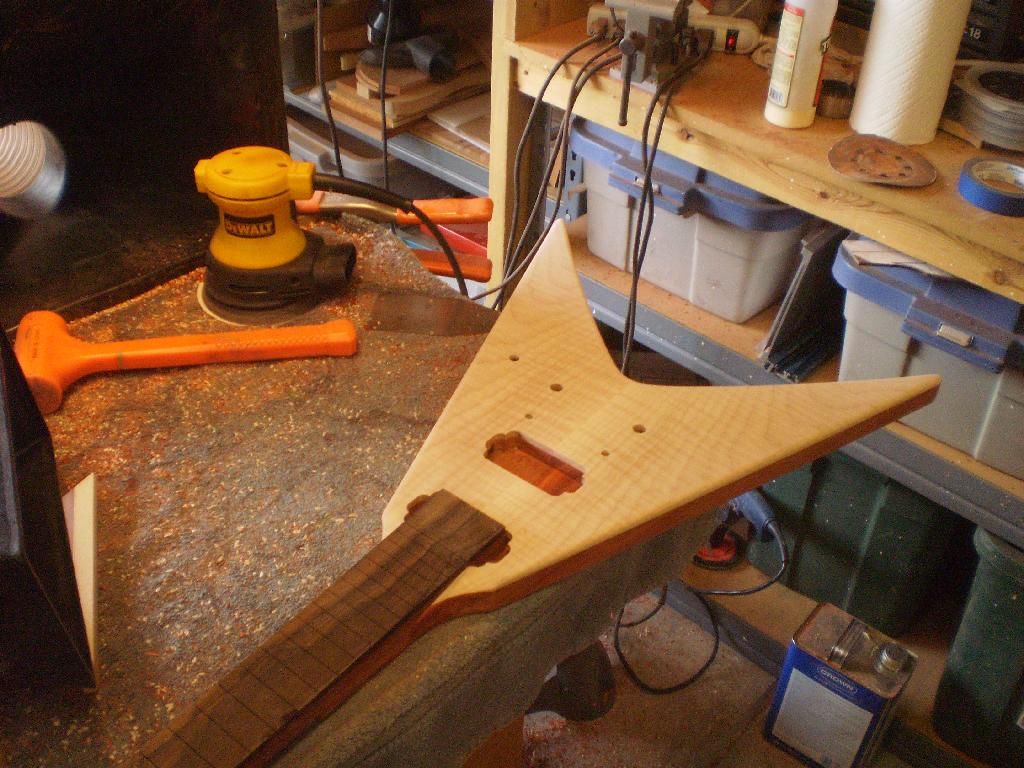
This one might be ok when it is done.
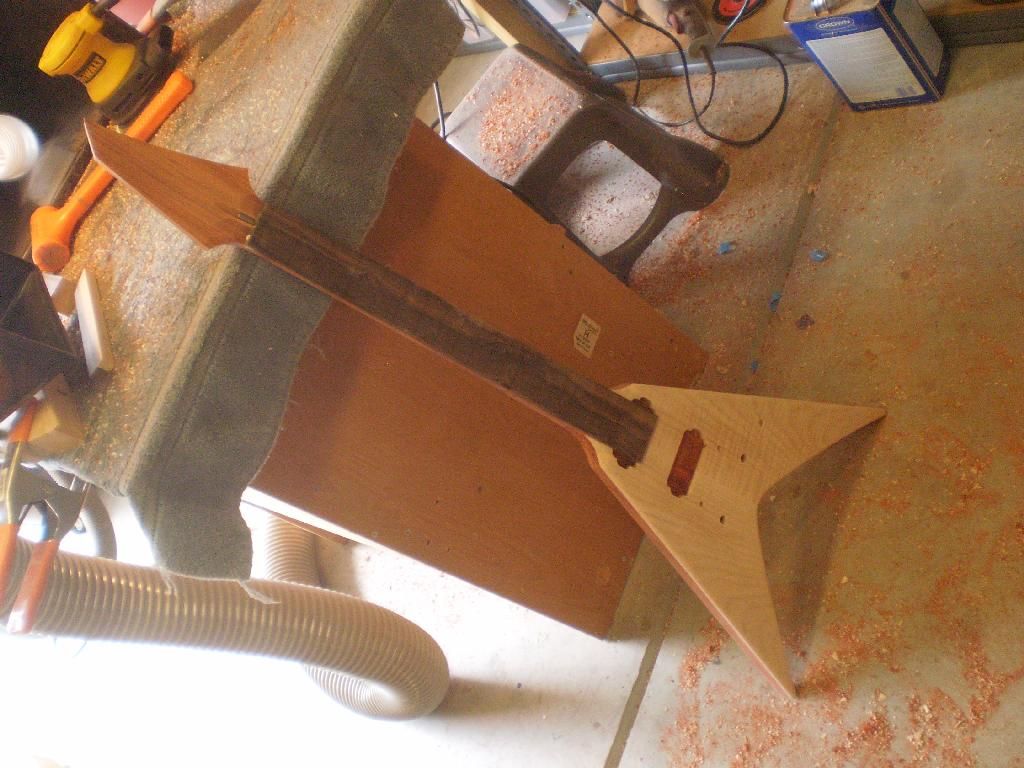

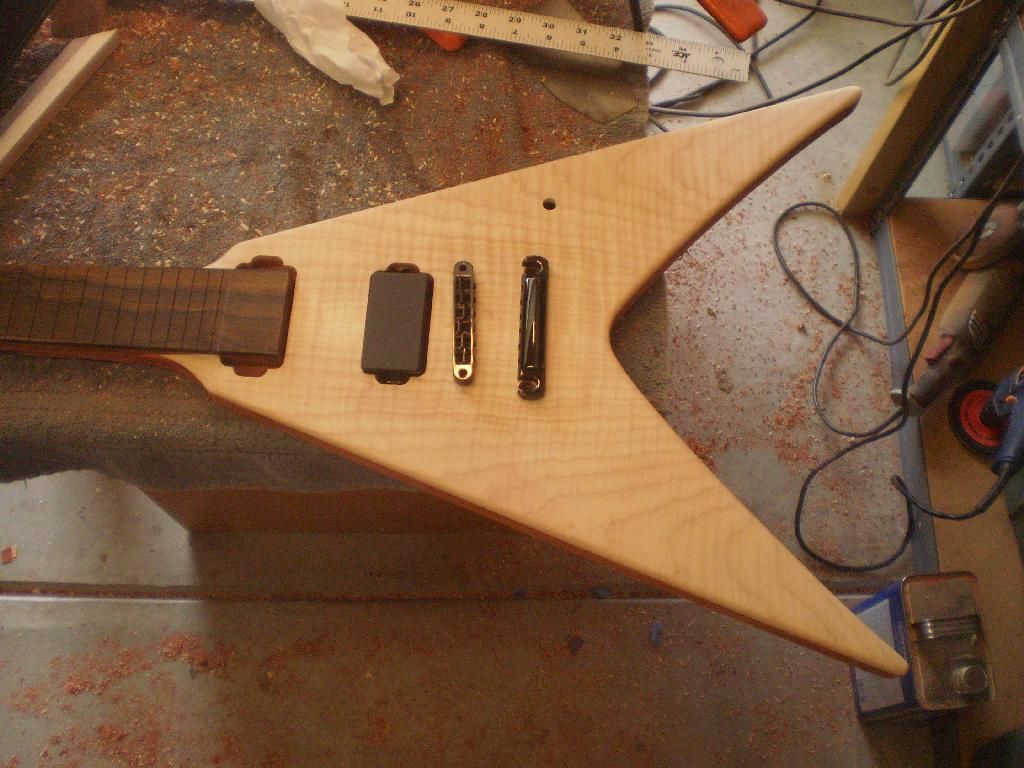
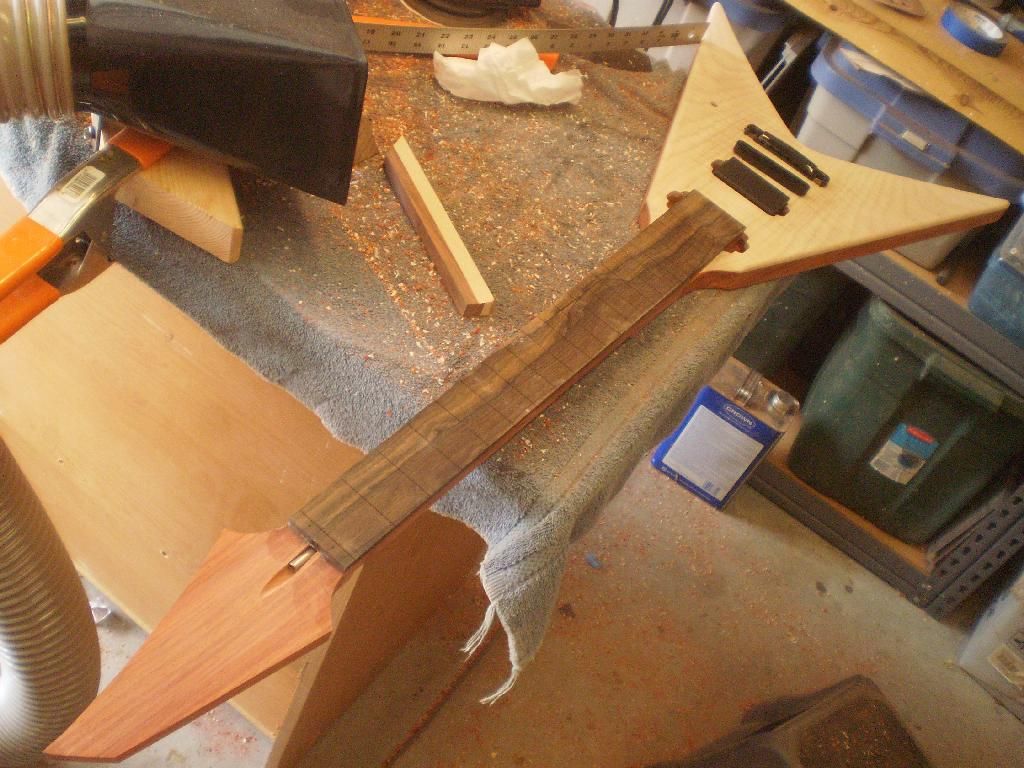
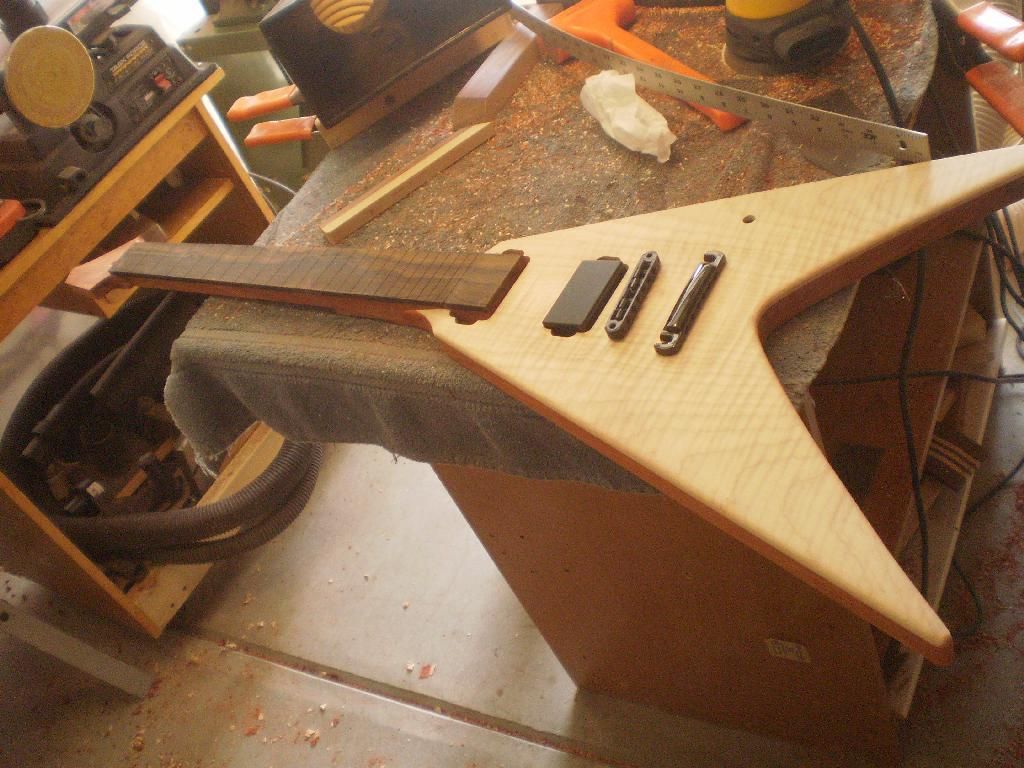
Starting on neck work.
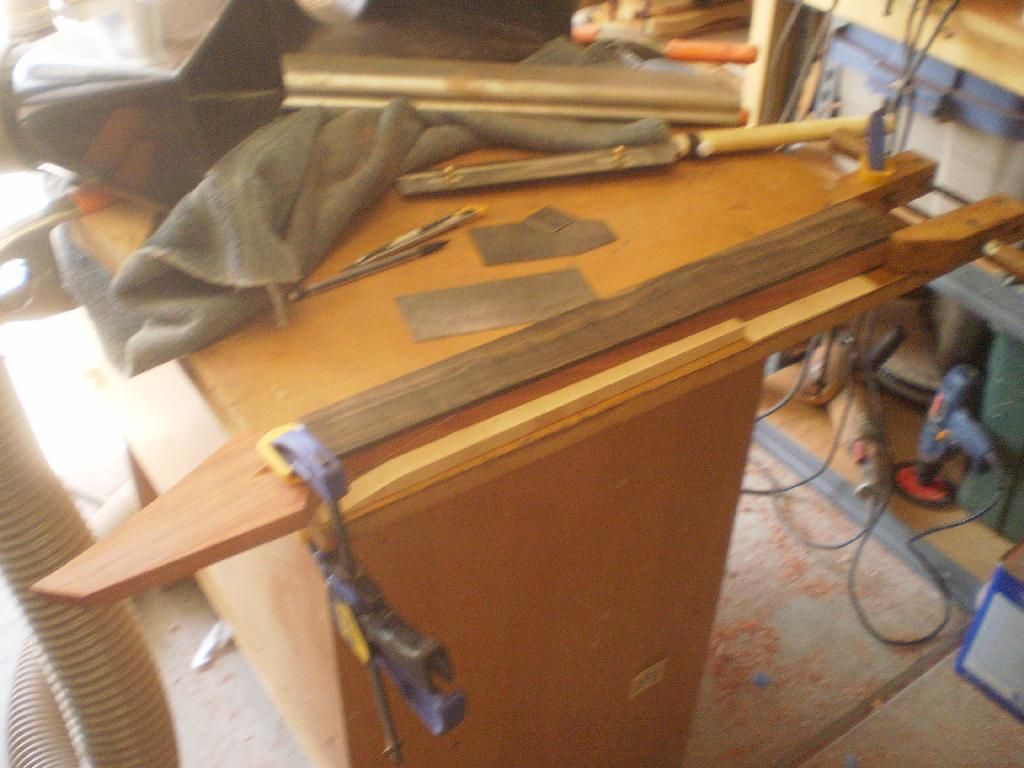
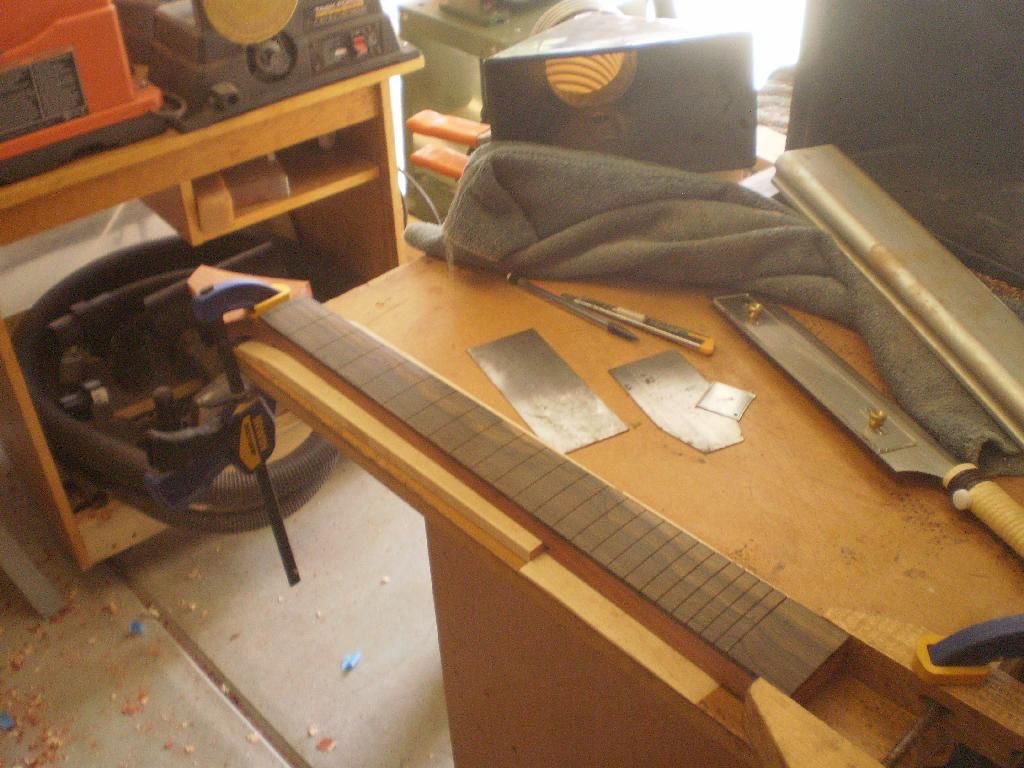
No comments:
Post a Comment
Note: Only a member of this blog may post a comment.